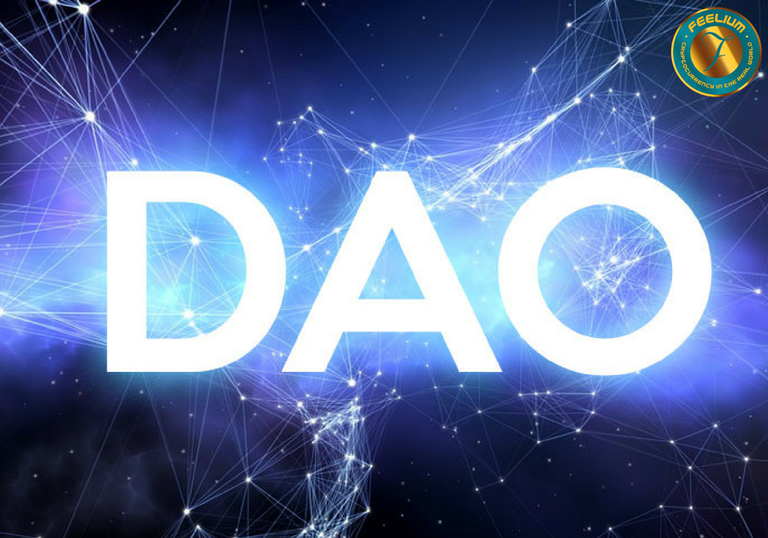
DAOs or Decentralized Autonomous Organizations became popular in the digital market when bitcoin was introduced with the idea of eliminating third parties. Similar to the technology behind bitcoins, the idea behind DAO is to create an organization that needs no hierarchical management.
Inner workings of a DAO
Initially bitcoin was considered as the first ever functional DAO because it functions autonomously and has a set of pre-programmed rules. The smart contracts on blockchain technology brought the DAO’s closer to the real world and shaped the way they are today.
To be fully operational, a DAO requires a set of rules. The rules are encoded as a smart contract which is a computer program, that anonymously exists out there on the internet. Also, people are required to execute tasks that the contract can’t perform itself.
The next phase is the funding phase. The funding phase is important for two reasons. Firstly, a DAO needs to have an internal property, or tokens that can be used by the organisation and secondly, by investing in DAO, users are given voting rights and afterwards the ability to influence the way it operates. Once the funding phase comes to an end, the DAO becomes totally independent of any authority. The code is visible to everyone now as the DAO becomes an open network. Blockchain technology keeps a record of all the transactions, thus making the DAO fully transparent.
When the DAO becomes fully operational, the decision as to how things will proceed is reached through a consensus. Moreover, a DAO helps us to exchange our funds with anyone globally. The exchange can be in the form of an investment, a donation, money raising and so on. One major concern with the voting system is that even if a security issue comes up in the initial code, it cannot be rectified until the majority votes for it.
The hole in the DAO network
The best attempt of making such an organization was The DAO. The project was launched in 2016 but unfortunately, it failed in a short span of time. Anyone who had internet access could buy DAO tokens and DAO creators would set all the rules. An error was detected soon in the initial programming and while the experts were working to fix it, an attacker managed to drain more than 3.6m Ether into a child DAO that operates in the same way as a DAO. The price of Ether dropped from $20 to $13. Several people tried to stop more Ether from being taken but they couldn’t gather enough support. The Ethers were all stored in a single address, which was not such a great idea.
Examples of DAO
Dash – An open source peer to peer network which offers instant payments.
Digix Global – Deals with peer to peer digital assets.
BitShares – A decentralized exchange.
Security
Today, it is difficult to change a DAO or any smart contract associated with it once it is associated with the blockchain network. This is beneficial because a single person cannot change the rules. But at the same time, the network is a huge disadvantage because if someone detects an error in a running DAO, developers cannot essentially change the code. The DAO suffered the same issue. The developers could see the draining of funds but could not do anything to stop it.
Legal Status
The accurate legal status of the DAO is pretty unclear.
Feelium
Feelium is a blockchain technology platform that uses a decentralized network for contracting services. Smart contracts on the Feelium platform can be shared securely between users in a transaction. The validation process of a contract is also conducted over the network. Once validated and saved, the contract is immutable. Smart contracts are self-regulatory; so once the terms are set, the contract will ensure that they are fulfilled.
To the question in your title, my Magic 8-Ball says:
Hi! I'm a bot, and this answer was posted automatically. Check this post out for more information.
very interesting